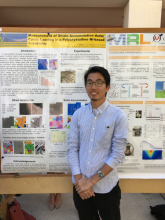
University:
Major:
Mentor(s):
Faculty Sponsor(s):
Faculty Sponsor's Department:
Project Title:
Project Description:
In polycrystalline Ni-based superalloys, used widely in turbine disks for power generation and aerospace applications, damage during cyclic loading is a critical problem. While fatigue cracks may initiate at large pores or inclusions, such extrinsic defects are uncommon in alloys processed through advanced powder metallurgical routes. In the absence of such large imperfections, initiation occurs due to strain localization and accumulation at intrinsic defects, making fatigue life microstructure sensitive and lifetime prediction challenging. To predict and improve the fatigue lifetime, there is a need to quantify the plastic strain localization and accumulation during cyclic loading. Plastic deformation is localized into physical slip bands at the sub-grain scale. Understanding the relationship between slip band formation and their evolution during cycling as a function of the underlying microstructure is mandatory. In the present study, in-situ and ex-situ cyclic loading tests were performed on a polycrystalline Ni-based superalloy, and plastic strain localization was measured by high resolution digital image correlation under a scanning electron microscope. The high strain localizations were observed to develop near specific twin boundaries. The evolution of these localizations during cycling, which untimely induced crack initiation, was measured according the number of cycles.
